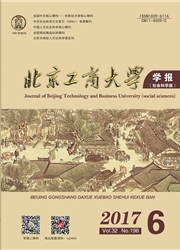

 中文摘要:
中文摘要:
利用1999—2010年我国31个省数据构建面板数据模型,实证研究了流通创新对居民消费率的影响。运用2SLS和GMM方法克服模型的内生性,并选择不同的解释变量考察估计结果的稳健性。结果表明,流通技术进步和组织创新对居民消费率的提升产生了较为明显的促进作用,而技术效率对居民消费率提升的作用不显著。运用2SLS和GMM方法处理模型内生性的估计结果,进一步支持流通技术进步和组织创新估计结果的稳健性。
 英文摘要:
英文摘要:
With the panel data of 31 provinces in China in the years from 1999 to 2010, this paper empirically studies the influence that circulation innovation enhances the consumption rate. To overcome endogeneity of model and examine the robust- ness of the estimated results, this paper applies 2SLS and GMM methods and selects different explanatory variables. The results show that technological progress and organizational innovation in circulation produce a significant role in upgrading the ratio of consumption, but technical efficiency in circulation is not significant in enhancing the consumption rate. The results of 2SLS and GMM to process the endogeneity in model further support the robustness of the estimated results.
 同期刊论文项目
同期刊论文项目
 同项目期刊论文
同项目期刊论文
 期刊信息
期刊信息
